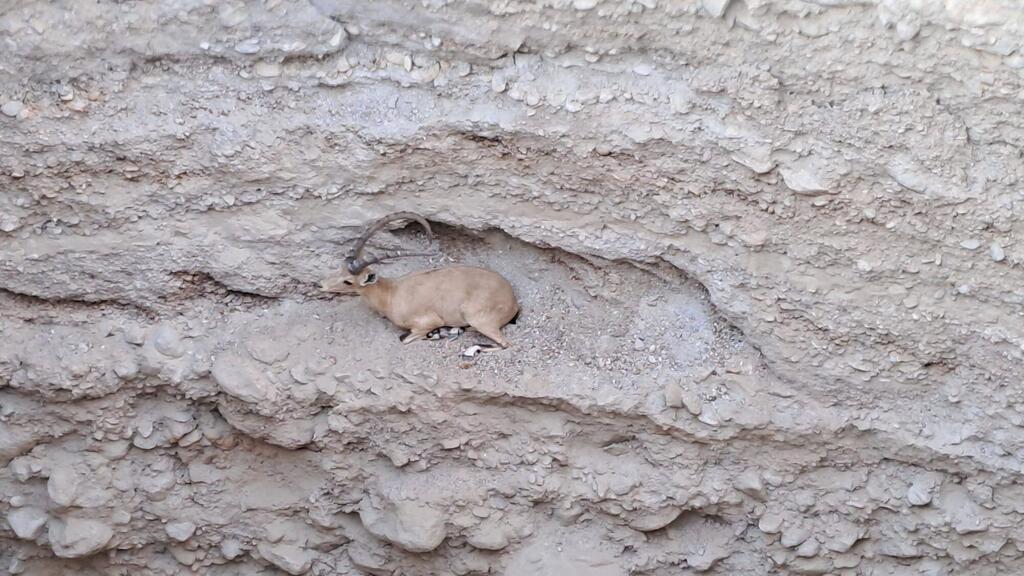Getting your Trinity Audio player ready...
The ibex's rescue operation
(Video: Israel Police, Nature and Parks authority)
A Nubian ibex that fell into a 10-meter-deep and 8-meter wide sinkhole was rescued by the Israel Police’s Ein Gedi Natural Reserve rescue unit, in collaboration with Nature and Parks Authority. The ibex was released back into the wild following the successful rescue.
Eyal Dozoratz from Kibbutz Ein Gedi was walking with his dog early in the morning on Tuesday when he noticed the ibex lying at the bottom of the sinkhole. He alerted staff at the Ein Gedi nature reserve and the Ein Gedi rescue unit, along with officers from the Arad Station.
"We rappelled down into the sinkhole using a rope," Boaz Leimzider, of theEin Gedi Rescue Unit usually tasked with saving hikers, said. "We then tied up the ibex which was hoisted up and brought up safely."
Shai Rosenzweig, the Nature and Parks Authority’s Dead Sea inspector said that the animal was saved thanks to Dozoratz’s alertness because it would not have been able to climb up from such depth on its own and would have died. The ibex was an adult, approximately 10 years old. "The efficient cooperation between the forces saved the ibex," he said.
2 View gallery


The sinkhole in which the ibex was found
(Photo: Israel Police, Nature and Parks Authority)
About 200 ibexes live in the Dead Sea area. The Nature and Parks Authority said that the Nubian ibex is a flagship species for the conservation of nature in Israel. It’s a symbol of successful species conservation and has been the Nature and Parks Authority’s emblem since its establishment in 1964.
The ibex’s global population is declining, while in Israel it may be the largest and most protected in the world. Most of the Ibex population is concentrated in the Judean Desert and the Negev. Two small groups also live in the Eilat Mountains and the southern Arava Dessert, and another group has made the Golan Heights its home, brought there from Ein Gedi.






